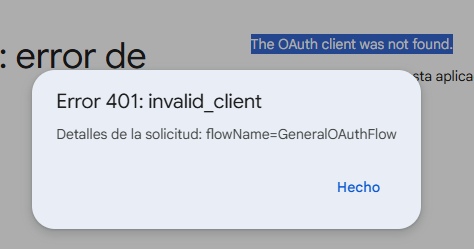This is a document of how I created an Oauth2 account with office365. It may not be 100% accurate. Give it a try if you have never tried to send email using Oauth2.
Setup outlook for Oauth2 and email
Register at this page. You will need to provide a credit card.
https://azure.microsoft.com/en-us/get-started/welcome-to-azure/
Start here
https://portal.azure.com/#view/Microsoft_AAD_RegisteredApps/ApplicationsListBlade
New Registration
Give it a name
Select the account type ( I chose multitenant
Redirect URL i chose web and http://localhost:8123
Click Register
Note - You should now see the application ID You will need this for your application
Click on the menu item Certificate & Secrets or Click on Add a Certificate or Secret on the right
Click on New Client Secret
Add a description
Select an expiration
Click ADD
You will see a value and secret ID. IMPORTANT! You want the VALUE and not the SECRET ID! you will use the VALUE as the secret id in NetTalk.
Click on the menu item API and permissions
Click on Add a permission
Click on Microsoft Graph
Click on Delegated permissions
( note there is a search for permissions. you will check two permissions )
Check offline_access
Check SMTP.Send
Click Add permissions
You should see your permissions added. Click on SMTP.Send
That should be it on the MS side.
The code for the OAuthParams is as follows
clear(OAuthParms)
OAuthParms.pServiceName = 'Microsoft'
OAuthParms.pOAuthVersion = 2
OAuthParms.pClientId = glo:ClientIdOutlook !
OAuthParms.pClientSecret = glo:ClientSecretOutlook !
OAuthParms.pRedirectURL = 'http://localhost:8123'
OAuthParms.pExternalBrowser = netOAuth:UseLocalBrowser
OAuthParms.pListenTLS = false
OAuthParms.pListenPort = 8123
OAuthParms.pListenBindIP = '127.0.0.1'
OAuthParms.pScope = 'https://outlook.office.com/SMTP.send offline_access'
OAuthParms.pAuthorizeURL = 'https://login.microsoftonline.com/organizations/oauth2/v2.0/authorize'
OAuthParms.pAccessTokenURL = 'https://login.microsoftonline.com/organizations/oauth2/v2.0/token'
OAuthParms.pExpectedCertificateCommonName = 'stamp2.login.microsoftonline.com'
Sending the email works as follows:
EmailTo = glo:ToEmail
EmailSubject = glo:ToEmailSubject
EmailMessageText = glo:ToEmailMessageText
EmailFrom = glo:FromEmailOutlook
EmailUser = glo:FromEmailOutlook
EmailServer = 'smtp.office365.com'
EmailPort = 587
EmailPassword = ''
EmailToken = OAuthParms.rToken
EmailSSL = TRUE
EmailStartTLS = TRUE
I would encourage anyone to try this out and please improve the documents where possible.
I also go gmail to work but I do not have the instructions for how to setup the gmail with google.
I can provide the code section.
Gmail OAuthParams:
clear(OAuthParms)
OAuthParms.pServiceName = 'Google'
OAuthParms.pOAuthVersion = 2
OAuthParms.pClientId = glo:ClientIdGmail !Marathon
OAuthParms.pClientSecret = glo:ClientSecretGmail !Marathon
OAuthParms.pRedirectURL = 'http://localhost:8123'
OAuthParms.pExternalBrowser = netOAuth:UseLocalBrowser
OAuthParms.pListenTLS = false
OAuthParms.pListenPort = 8123
OAuthParms.pListenBindIP = '127.0.0.1'
OAuthParms.pScope = 'https://mail.google.com/'
OAuthParms.pAuthorizeURL = 'https://accounts.google.com/o/oauth2/auth'
OAuthParms.pAccessTokenURL = 'https://accounts.google.com/o/oauth2/token'
Gmail Email:
EmailTo = glo:ToEmail
EmailSubject = glo:ToEmailSubject
EmailMessageText = glo:ToEmailMessageText
EmailFrom = glo:FromEmailGmail
EmailUser = glo:FromEmailGmail
EmailServer = 'smtp.gmail.com'
EmailPort = 587
EmailPassword = ''
EmailToken = OAuthParms.rToken
EmailSSL = TRUE
EmailStartTLS = TRUE
I failed to get Yahoo to work. If anyone can help with this I would be very grateful.
Attempted OAuthParams:
clear(OAuthParms)
OAuthParms.pServiceName = 'Yahoo'
OAuthParms.pOAuthVersion = 2
OAuthParms.pClientId = glo:ClientIDYahoo
OAuthParms.pClientSecret = glo:ClientSecretYahoo
OAuthParms.pRedirectURL = 'https://falcon.mscflexone.com'
OAuthParms.pExternalBrowser = netOAuth:UseLocalBrowser
OAuthParms.pListenTLS = false
OAuthParms.pListenPort = 8123
OAuthParms.pListenPort = 80
OAuthParms.pListenBindIP = '127.0.0.1'
OAuthParms.pScope = 'email'
OAuthParms.pAuthorizeURL = 'https://api.login.yahoo.com/oauth2/request_auth'
OAuthParms.pAccessTokenURL = 'https://api.login.yahoo.com/oauth2/get_token'
OAuthParms.pExternalBrowser = netOAuth:OnScreenHTML
Email:
EmailTo = glo:ToEmail
EmailSubject = glo:ToEmailSubject
EmailMessageText = glo:ToEmailMessageText
EmailFrom = glo:FromEmailYahoo
EmailUser = glo:FromEmailYahoo
EmailServer = 'smtp.mail.yahoo.com'
EmailPort = 587
EmailPassword = ''
EmailToken = OAuthParms.rToken
EmailSSL = TRUE
EmailStartTLS = TRUE
Jeff Hojka

